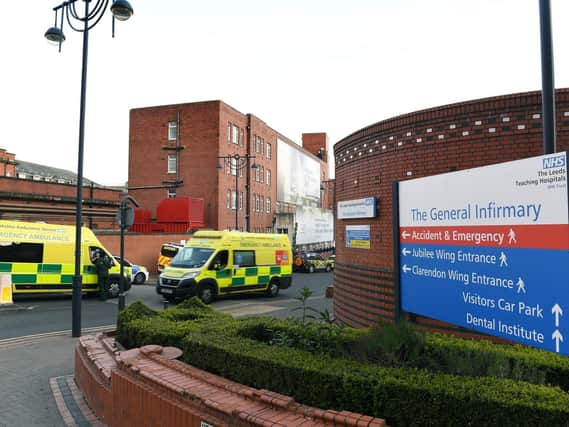Leeds hospitals' waiting lists hit 62k patients as doctors' union raises fears over staff burnout


The latest statistics released by NHS England and NHS Improvement show the trust - one of the biggest in the UK - had a total of 62,806 patients waiting to start treatment at the end of May 2021.
Of these, 3,565 patients had been waiting for over a year and nearly three quarters - 74.6 per cent - of patients had been waiting up to 18 weeks, far below the 92 per cent standard.
Advertisement
Hide AdAdvertisement
Hide AdThe statistics show the waiting times for those who have been referred to treatment for consultant-led elective care, with the national total given as 5.3 million people - breaking records for the second month in a row, after April’s figures also reached 5.1 million.
In Leeds, the backlog has continued to increase with the total waiting for care in May up by a further 240 patients when compared to the month before but the Trust had managed to cut the number of those waiting over a year, with 542 fewer patients reaching that grim milestone in May compared to April.
It comes just days after the Trust announced it had once again had to postpone some planned elective operations after its hospitals had become “incredibly busy”.
Last week its chief medical officer, Dr Phil Wood said along with the rest of the NHS, the Trust had been seeing an increase in patients admitted with Covid-19 as well as “significant demand right across the healthcare system in Leeds, including our emergency departments.”
Advertisement
Hide AdAdvertisement
Hide AdSpeaking at the time, he said: ““While every patient’s care is important to us, we have had to postpone some planned elective operations to ensure patients who require urgent treatment are prioritised.”
Dr Brian McGregor, Yorkshire regional council chair of the doctors’ union, the British Medical Association, called for urgent investment to help the NHS cope with the increasing demand.
Calling the backlog of care “one of the greatest challenges the NHS in Yorkshire faces”, he said: “With cases rising rapidly in Yorkshire and across the rest of the country, there are very real concerns that the Government’s approach may fuel a further rise and risk tipping the NHS into an impossible and unmanageable situation yet again.
“It is absolutely vital that the NHS receives immediate investment in the workforce to allow the NHS to cope with existing and future demand as staff are already exhausted and burnt out.”
Advertisement
Hide AdAdvertisement
Hide AdResponding to the waiting list figures, Dr Phil Wood told the Yorkshire Evening Post: “The huge impact of the pandemic has been felt across communities and across the NHS, not only through high numbers of patients seriously ill with COVID-19, but through the knock-on effect on patients waiting for treatment.
“It’s important to recognise that despite immense pressure our teams continue to work incredibly hard to prioritise and treat patients. However, rising numbers of cases of COVID-19 delta variant inevitably reduce our capacity to treat patients waiting for non-urgent treatment.”
He added that, over the past year, staff had carried out more than 80,000 elective operations and held around 16,000 virtual appointments, to continue to deliver care to patients.
Support the YEP and become a subscriber today. Enjoy unlimited access to local news and the latest on Leeds United, With a digital subscription, you see fewer ads, enjoy faster load times, and get access to exclusive newsletters and content. Click here to subscribe.
Comment Guidelines
National World encourages reader discussion on our stories. User feedback, insights and back-and-forth exchanges add a rich layer of context to reporting. Please review our Community Guidelines before commenting.